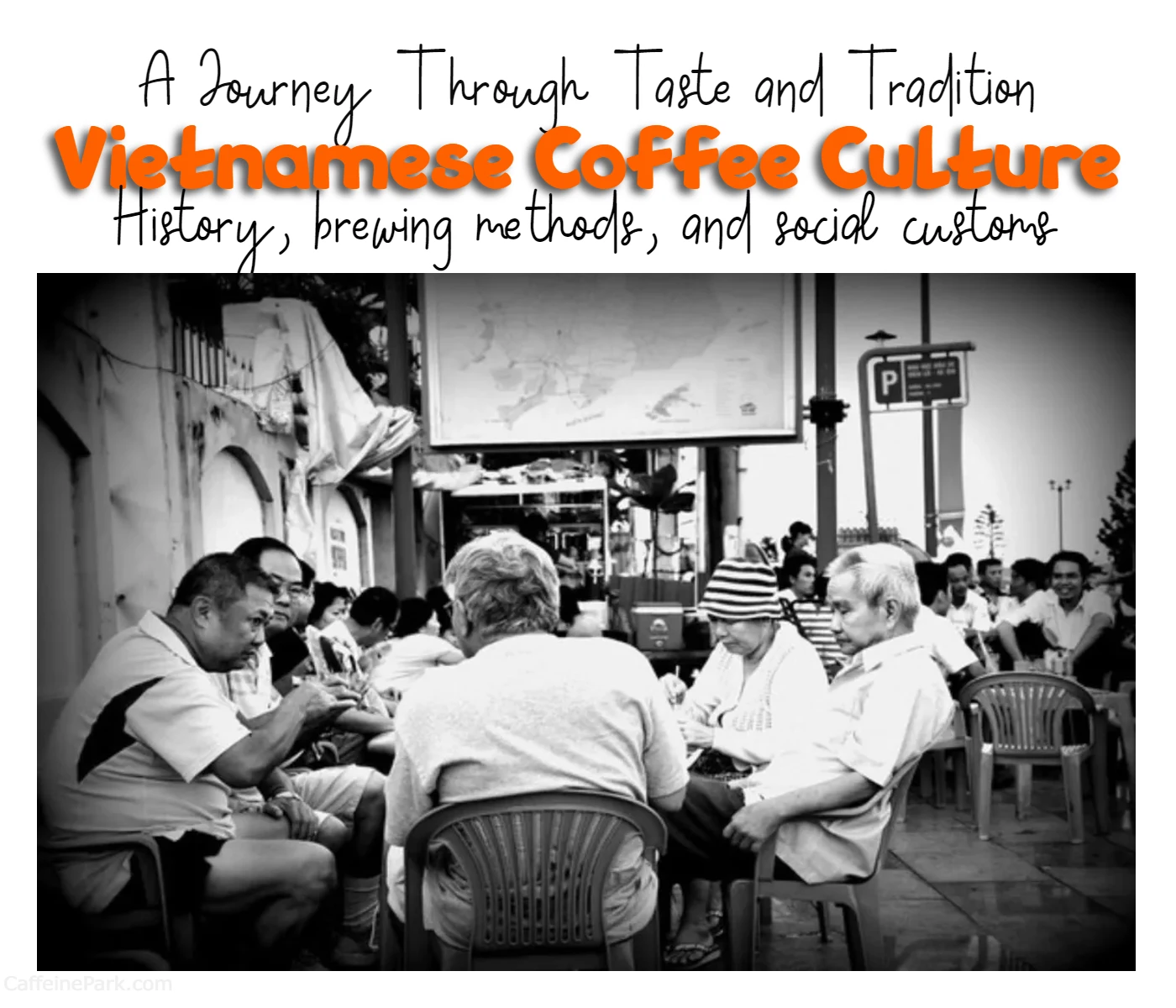
Vietnamese Coffee Culture
Welcome to my blog about Vietnamese coffee culture! If you’re a coffee lover or just curious about different coffee cultures around the world, you’re in for a treat. Vietnamese coffee is known for its unique taste and brewing method, as well as its important role in daily life and social interactions in Vietnam.
In this blog, I’ll take you on a journey through the fascinating world of Vietnamese coffee culture. We’ll explore the history of coffee in Vietnam, the different types of Vietnamese coffee, the unique brewing techniques, and the social aspect of drinking coffee in Vietnam. You’ll learn about the rich traditions and customs that have been passed down through generations, and gain a deeper appreciation for this beloved drink and the culture that surrounds it.
So, grab a cup of coffee and join me as we explore the world of Vietnamese coffee culture. By the end of this blog, I hope you’ll have a better understanding of why coffee is such an important part of Vietnamese daily life and culture. Read to the end to discover more about this fascinating culture and how you can experience it for yourself.
Introduction: The Love for Coffee in Vietnam
Vietnam is a country with a rich coffee culture, where coffee is not just a drink, but an essential part of daily life. Vietnamese coffee has a distinct taste and preparation method that sets it apart from other types of coffee. In this article, we’ll explore the different aspects of Vietnamese coffee culture, from the history of coffee in Vietnam to the unique brewing techniques and the social aspect of drinking coffee in Vietnam.
History of Coffee in Vietnam
Coffee has a long and rich history in Vietnam, dating back to the late 19th century when the French first introduced coffee to the country. However, it wasn’t until the 20th century that coffee production began to thrive in Vietnam, and the country quickly became one of the world’s leading coffee exporters.
The French established the first coffee plantations in Vietnam in the 1870s, primarily in the southern region of the country. However, it wasn’t until the early 20th century that coffee production began to expand rapidly, with the establishment of larger plantations and the adoption of modern farming techniques.
During the 1920s, Vietnam was one of the world’s largest coffee exporters, with the majority of its coffee being shipped to France. However, the country’s coffee production was greatly impacted by the Vietnam War, which led to a decline in coffee production in the 1960s and 1970s.
After the war, the Vietnamese government implemented reforms to encourage coffee production, and by the 1990s, Vietnam had once again become a leading coffee exporter. Today, Vietnam is the second-largest coffee producer in the world, with the majority of its coffee being exported to countries such as the United States, Japan, and Germany.
Coffee has become an integral part of Vietnamese culture, with coffee shops and cafes being a common gathering place for locals. The unique taste and brewing method of Vietnamese coffee have also gained popularity worldwide, with coffee lovers from all over the world seeking out the rich and complex flavors of this beloved beverage.
Types of Vietnamese Coffee
Vietnamese coffee is renowned for its unique taste and brewing method, which involves using a small metal drip filter called a phin. There are several different types of Vietnamese coffee, each with its unique taste and brewing method.
- Cà phê đen: This is black coffee, which is made by brewing coffee in a phin and serving it without any added milk or sugar. It has a strong and bold taste and is perfect for those who prefer their coffee without any sweetness.
- Cà phê sữa: This is coffee with sweetened condensed milk, which is added to the phin before brewing. The sweetened condensed milk adds a rich and creamy texture to the coffee, and the resulting beverage has a sweet and mellow taste.
- Cà phê sữa đá: This is iced coffee with sweetened condensed milk, which is perfect for cooling off on a hot day. It is made by brewing the coffee in a phin and serving it over ice with sweetened condensed milk.
- Cà phê trứng: This is egg coffee, a unique and distinct coffee beverage that is made by whipping egg yolks with sugar and condensed milk and then adding coffee. It has a creamy and frothy texture and a sweet and rich taste.
- Cà phê chồn: This is weasel coffee, a rare and expensive type of coffee that is made from coffee beans that have been eaten and excreted by civets. The beans are collected from the civet’s droppings, washed, and then roasted to create a unique and complex flavor.
Each type of Vietnamese coffee has its unique taste and is often served with different accompaniments. Regardless of which type of Vietnamese coffee you choose, you are sure to enjoy the rich and complex flavors that this beloved beverage has to offer.
Brewing Techniques
One of the most unique aspects of Vietnamese coffee culture is the brewing method. Vietnamese coffee is typically brewed using a small metal filter called a phin. The phin consists of three parts: a small cup to hold the coffee grounds, a perforated insert that fits on top of the cup, and a lid to keep the coffee hot while it’s brewing.
To make coffee using a phin, you start by adding a spoonful of coffee grounds to the cup, then placing the insert on top and pressing it down slightly. Next, you pour hot water into the cup and wait for the coffee to drip through the perforations and into the cup below. The process can take a few minutes, but it results in a rich and flavorful cup of coffee.
Social Aspect of Drinking Coffee in Vietnam
In Vietnam, coffee is not just a drink, it’s a social activity. Many Vietnamese people enjoy meeting friends or conducting business meetings over a cup of coffee. Coffee shops are an important part of Vietnamese culture, and they can be found on almost every street corner in major cities like Hanoi and Ho Chi Minh City.
One popular type of coffee shop in Vietnam is the cà phê trứng, or egg coffee shop. These coffee shops serve a unique type of coffee that is made by whisking egg yolks with condensed milk and coffee to create a frothy, creamy drink. Egg coffee shops are popular among locals and tourists alike, and they provide a cozy and welcoming atmosphere for those looking to enjoy a cup of coffee and some good company.
Another popular social activity in Vietnam is people-watching. Vietnamese people enjoy sitting at coffee shops and watching the world go by, whether it’s in a bustling city or a peaceful countryside town. Coffee shops provide a great opportunity to observe and interact with locals, and they offer a window into Vietnamese culture that is hard to find elsewhere.
Conclusion: A Unique and Beloved Tradition
In conclusion, Vietnamese coffee culture is a unique and beloved tradition that has been passed down through generations. From the history of coffee in Vietnam to the unique brewing techniques and the social aspect of drinking coffee in Vietnam, coffee is a beloved and integral part of daily life. Whether you’re enjoying a cup of cà phê sữa đá on a hot summer day or sipping a strong and bitter cà phê đen đá with friends, Vietnamese coffee is a taste and experience that cannot be found anywhere else in the world.
As Vietnam continues to grow and develop, its coffee culture remains an important part of its national identity. From the bustling city streets to the serene countryside towns, coffee shops can be found everywhere in Vietnam, providing a warm and welcoming atmosphere for locals and tourists alike.
If you ever have the opportunity to visit Vietnam, be sure to try the local coffee and experience the unique and wonderful culture that surrounds it. Whether you’re a coffee lover or not, you’re sure to be impressed by the passion and dedication that the Vietnamese people have for their beloved drink.
FAQs
Vietnamese coffee is a unique and distinct coffee beverage made with a combination of dark roast coffee, sweetened condensed milk, and ice. It is known for its sweet and creamy taste and is often served with ice to help combat the hot and humid weather in Vietnam.
The traditional brewing method for Vietnamese coffee is using a small metal drip filter called a phin. The coffee is placed in the filter, hot water is poured over it, and then the coffee slowly drips into a cup filled with sweetened condensed milk.
There are several different types of Vietnamese coffee, including cà phê đen (black coffee), cà phê sữa (coffee with condensed milk), and cà phê sữa đá (iced coffee with condensed milk). Each type has its unique taste and is often served with different accompaniments.
Coffee was first introduced to Vietnam by the French in the late 19th century. It quickly became a popular crop, and by the 1920s, Vietnam was one of the world’s leading coffee exporters. Today, coffee is an essential part of Vietnamese culture and has become an integral part of the country’s economy.
Coffee plays an important role in Vietnamese culture and is often enjoyed as part of social gatherings or business meetings. Coffee shops are a common gathering place for locals, and drinking coffee is seen as a way to build relationships and connections with others.
If you’re interested in experiencing Vietnamese coffee culture, the best way is to visit a local coffee shop or cafe in Vietnam. You can try different types of Vietnamese coffee and see firsthand how it is prepared and served. Additionally, many coffee shops in Vietnam offer a unique and welcoming atmosphere that is perfect for relaxing and socializing with others.
Read More:





